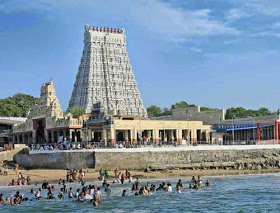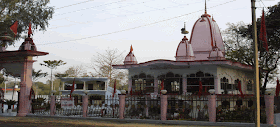Adhik Masam is an additional month that appears once in every 2-3 years in the Hindu lunar calendar. This implies that a year with Adhik Masam will have 13 months in place of 12 months. The main deity of this month is Lord Vishnu who is worshipped as ‘Purushottama’ and therefore this month is also known as ‘Purushottama Masam’.
The Hindu calendar is based on the cycle of moon and therefore consists of 354 days whereas the solar calendar consists of 365 days in a year. This difference of days (11 days) between the lunar and solar calendar, over a period of 2-3 years, makes up a full month of nearly 29 days. This month is then observed as Adhik Masam. It should therefore be understood that Adhik Masam will never occur in the solar calendar followed in the states of West Bengal, Orissa, Tamil Nadu, Assam and Kerala. The observance of this additional month is therefore restricted to states that follow the lunar-based calculations like Maharashtra, Gujarat, Karnataka and Andhra Pradesh. Special rituals are held in various temples in these states during the period of Adhik Masam.
Significance of Adhik Masam:
Adhik Masam holds immense religious significance for Hindu devotees. It is observed as a divine month where people get involved more in religious activities like Jaap, Daan, Pradakshinas and reading holy books. It is believed that by performing religious activities in this auspicious month will help in removing all the ‘Mala’ (bad or sinful things) and is therefore also referred as ‘Mala Masam’. Therefore during Adhik Masam, no festival or functions are celebrated. It is also a popular belief that by keeping a fast during Adhik Masam gives the same benefits as performing over 100 yagyas. By performing good deeds or acts during Adhik Masam one can get freedom from all sins committed in the present and past lives. The individual is also liberated from the continuous cycle of birth and death and ultimately reaches to the heavenly abode of Lord Vishnu, ‘Vaikuntha’.
Rituals during Adhik Masam:
- Adhik Masam is dedicated to Lord Vishnu and therefore Hindu devotees worship their deity regularly during this period. They spend their time performing ‘Japa’ and reciting mantras dedicated to Lord Krishna. Reading religious scriptures like ‘Bhagawad Gita’, ‘Sri Hari-Vaayu Stuthi’ and ‘Sri Vishnu Sahasranaama Stothram’ is considered very fortunate.
- Most of the Hindu devotees observe a fast during Adhik Masam. While some staunch devotees observe fasting for the entire month, keeping a vrat on few specific days is equally rewarding. The observer of the Adhik Masam vrat can eat only one meal during the day. He/she must maintain celibacy, speak truth, avoid criticism and keep oneself engaged in religious rituals. Consumption of non-vegetarian food and alcohol is strictly prohibited during Adhik Masam, even for those not observing the vrat.
- The ritual of ‘Akhanda Deep’ is also observed by many devotees. In this a ghee or til (sesame seeds) oil lamp is lighted in the puja room and it glows continuously (day and night) during the Adhik Masam period.
- Performing ‘daan’ or other charitable acts during Adhik Masam is highly rewarding. Donating clothes (Vastra Daan) and food (Annadan) during this period helps in removing all the malefic effects of the Navagrahas. During Adhik Masam, several Bhandara are conducted in temples all across India where food is offered to those poor and hungry.
North Indian calenders : June 17th - July 16th.
South Indian calenders : June 17th - July 16th.













